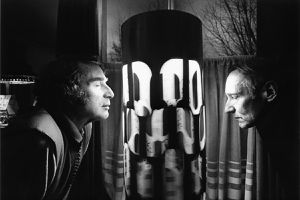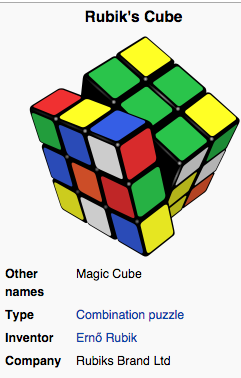User:Emily/Thematic Project/Trimester 03/02
"The most beautiful experience we can have is the mysterious - the fundamental emotion which stands at the cradle of true art and true science." ― Albert Einstein
"They were only interested in machines and drugs which made people go to sleep." ― Brion Gysin
- "The dreamachine was a collaborative creation between Brion Gysin and Ian Sommerville, the classical collision and collusion of the artist and the scientist. Both men had read Grey Walter's The Living Brain and were corresponding on the subject in early 1960. It was Sommerville who came up with the plans for the original flicker machine mounted on a 78rpm record player. Gysin, residing by this time in the Beat Hotel in Paris, constructed his own version, replete with calligraphic art, and obsessively began to refine its design. By the middle of the year he had taken out a patent ((P.V. 868 281) and was hawking the idea around town. For all his later concern about the possible risk in commercial exploitation of a machine that opened up psychic centres, he was nonetheless open to mass-market production."
- wikipedia definition: a stroboscopic flicker device that produces visual stimuli. Artist Brion Gysin and William S. Burroughs's "systems adviser" Ian Sommerville created the dreamachine after reading William Grey Walter's book, The Living Brain.
- mind machine/brain machine, uses pulsing rhythmic sound and/or flashing light to alter the frequency of the user's brainwaves.
- A mind machine is similar to a dreamachine in that both produce a flickering ganzfeld. The difference is that a dreamachine can be used by several people at once, but generally has fewer technical features than a mind machine.
- SINN + FORM Well this is not a dreamachine, but another practical use of similar structure in the manner of performance, or maybe can become live cinema
- What I might do with this piece is to reflect on permutation aspect embedded in dreamachine utilising audiovisual content. What you permutate you become.
- "For Gysin the way of permutation was the ‘way out’, the means of transcending our physical existence. The dreamachine was a similar device, creating pattern after pattern within the brain itself, turning image upon image, light upon light until the infinite became possible. "

Rubik's Cube

From wikipedia: In a classic Rubik's Cube, each of the six faces is covered by nine stickers, each of one of six solid colours: white, red, blue, orange, green, and yellow. In currently sold models, white is opposite yellow, blue is opposite green, and orange is opposite red, and the red, white and blue are arranged in that order in a clockwise arrangement.[11] On early cubes, the position of the colours varied from cube to cube.
The Thing
- phenomenologist --> a philosopher of existence as it is perceived from a subjective position
- what is perceived and what is 'real'
- how do we know what an object truly is <-- experience it only within certain frameworks
- what this thing is --> not how it appears to us, but what it actually is
- abolition of all distance brings no nearness
- remote, far-->picture on film or sound on the radio ; -->short distance is not in itself nearness, nor is great distance remoteness
- nearness --> what if it fails to come about , repelled by the abolition of distance, fails to appear
- abolition of great distance --> everything is equally far and equally near? --> without distance --> distancelessness
- the terrifying places everything outside its own nature --> it shows itself and hides itself --> everything presences, namely, in the fact that despite all conquest of distances the nearness of things remains absent
- immediate perception or a recollective representation
- the thingly character of the thing --> what in the thing is thingly --> we shall not reach the thing itself until out thinking has first reached the thing as a thing
- jug--vessel-->an object which a process of making has set up before and against us-->the jug's nature is its own is never brought about by its making
- self-support--> from the product's self-support, there is no way that leads to the thingness of the thing
- Plato--> everything present as an object of making
- "what stands forth" --> twofold standing prevails--? 1. the sense of stemming from somewhere; 2. the made thing's standing forth into the unconcealedness of what is already present
- the empty space--> this nothing of the jug, is what the jug is as the holding vessel
- The vessel's thingness does not lie at all in the material of which it consists, but in the void that holds
From Wikipedia
Martin Heidegger
Two observation:
- philosophy has attended to all the beings except for what Being itself is (Being and Time, with citation from Plato's Sophist)
- the presence of things is not their being, but them interpreted as equipment (according to a particular system of meaning and purpose)
- ready to hand --> authentic mode --> oversimplified reducing to possible future usefulness
- philosophy and science since ancient Greece --> reduced to things to their presence --> superficial way of understanding them
- Franz Brentano's treatise on Aristotle's manifold uses of the word "being" --> what kind of unity underlines this multiplicity of uses --> "history of being"(the history of the forgetting of Being)
- Edmund Husserl( largely uninterested in question of philosophical history) -->all that philosophy could and should be is a description of experience ("to the things them selves")
- Heidegger --> "intentional" consciousness(according to Husserl)
- all experience is grounded in "care" --> basis of "existential analytic" developed in Being and Time
- to describe experience properly entails finding the being for whom such a description might matter-->"Dasein", the being for whom Being is a question --> care
- Dasein, who finds itself throuwn into the world amidst things and with others --> is thrown into its possibilities, including the possibility and inevitability of one's own mortality.
The marriage of these two observations:
- concerned with time
